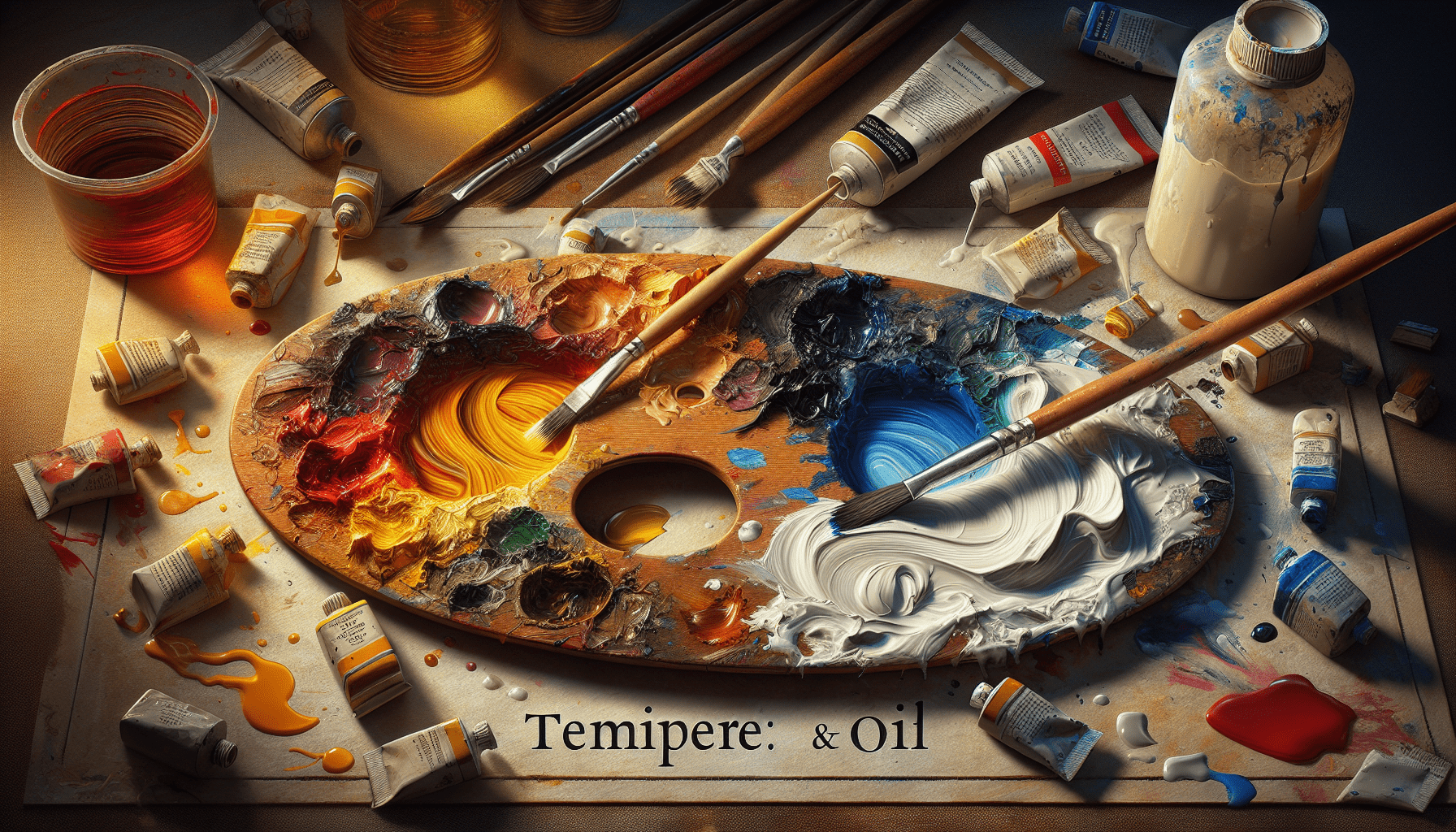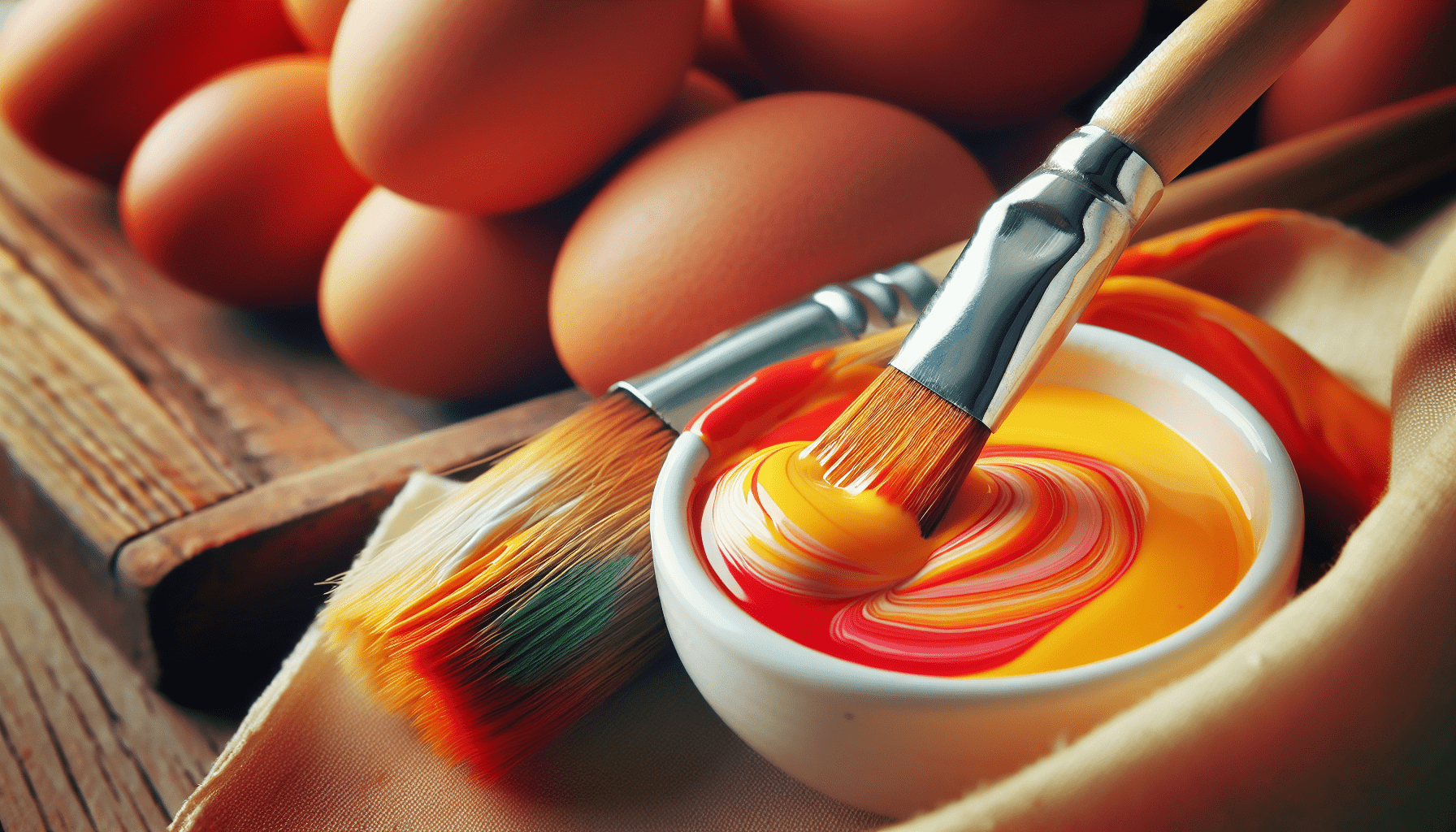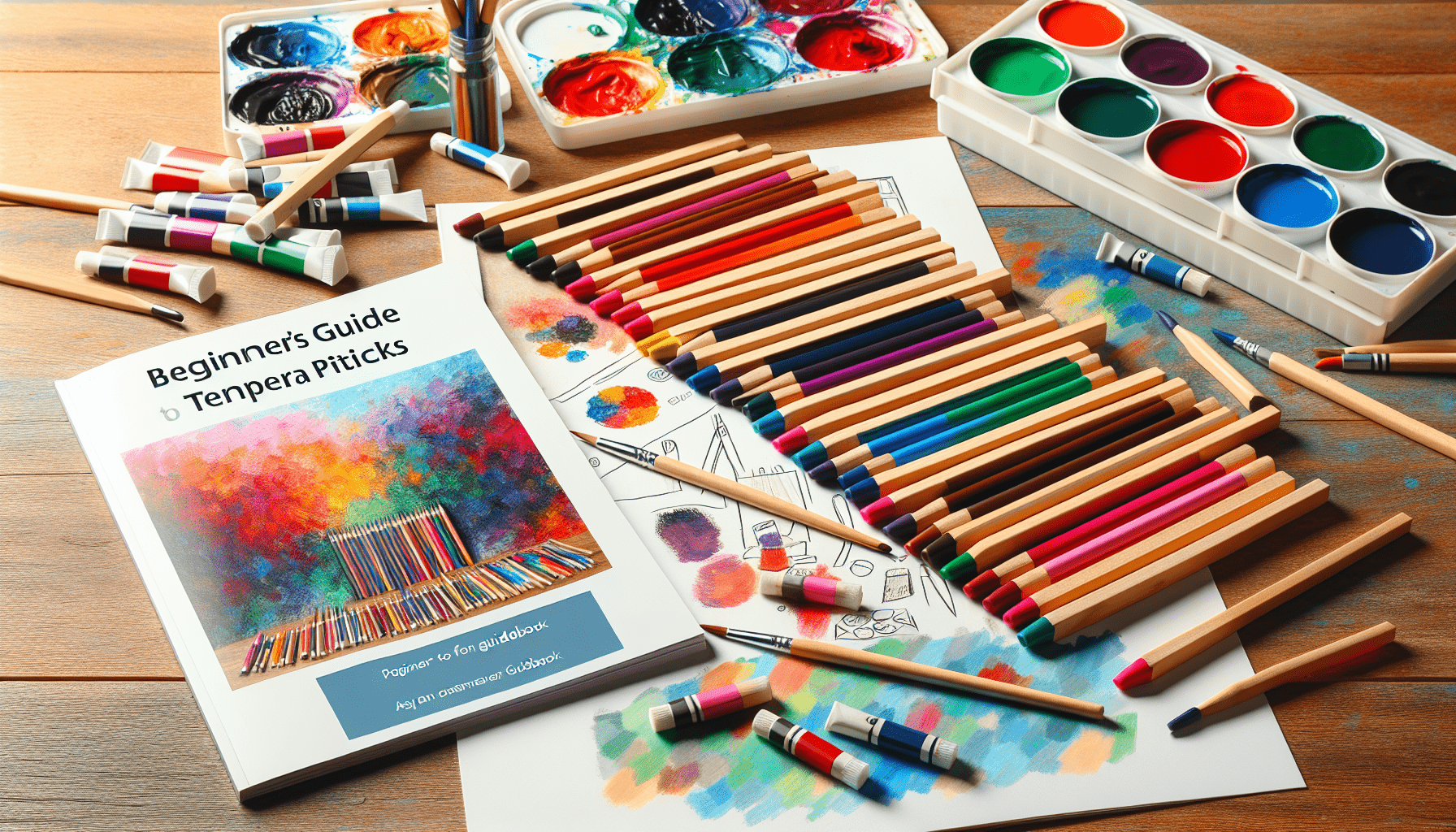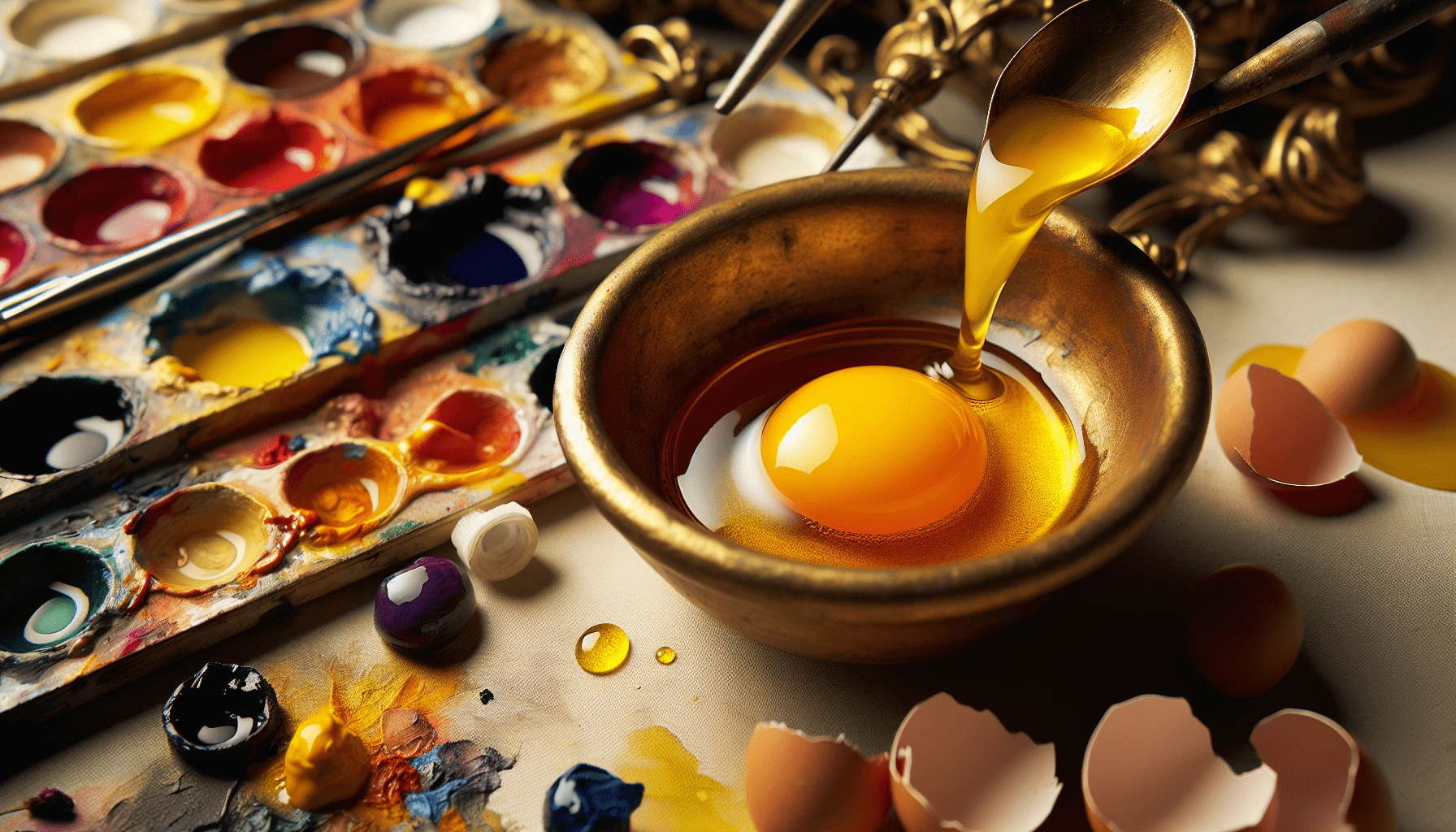In the world of artistic mediums, understanding the differences between tempera painting and oil painting is essential for artists looking to achieve certain effects and textures in their work. While both are incredibly versatile, tempera painting utilizes egg yolk as a binder, resulting in a quick-drying and opaque finish, while oil painting uses oil as a medium, allowing for greater flexibility and blending capabilities. By delving into the nuances of these two popular painting techniques, you can enhance your artistic skills and create stunning masterpieces that showcase your unique style and vision.
How Does Tempera Painting Differ From Oil Painting?
Have you ever wondered about the differences between tempera painting and oil painting? In this article, we will explore the unique characteristics of each medium, their advantages and disadvantages, as well as some tips for creating stunning artwork using tempera and oil paints.
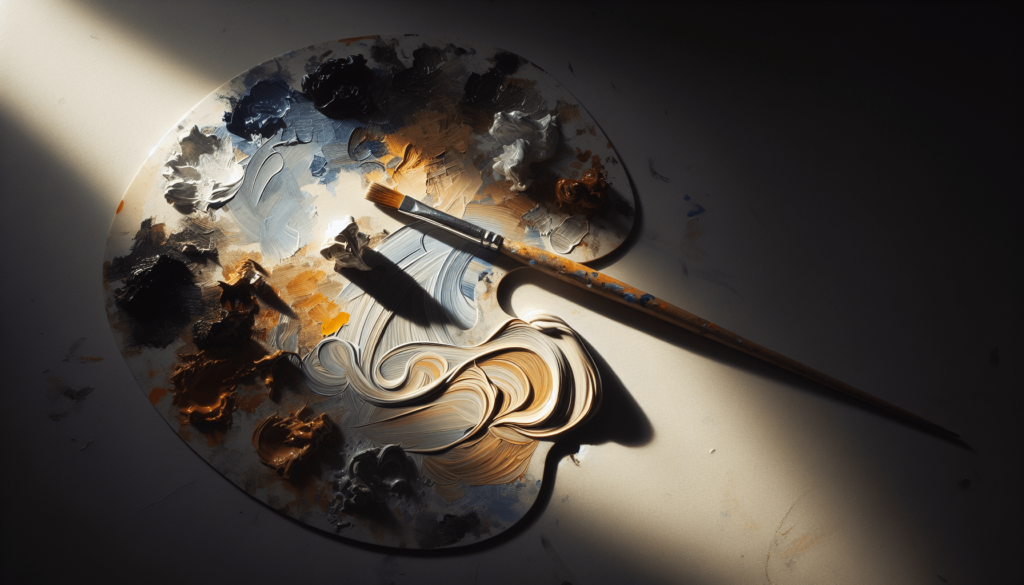
Overview of Tempera Painting
Tempera painting, also known as egg tempera, is a painting technique that involves mixing pigments with a water-soluble binder such as egg yolk. This ancient medium has been used for centuries and is known for its vibrant colors and fine detail. Unlike oil painting, tempera dries quickly and produces a smooth, matte finish.
Tempera paintings are typically done on a rigid surface such as wood or paper prepared with gesso. The paint dries quickly, which allows for precise and intricate details to be added to the artwork. However, the fast drying time can also make it challenging to blend colors or make changes once the paint has dried.
Advantages of Tempera Painting
One of the key advantages of tempera painting is its ability to create intricate details and fine lines. The quick drying time of tempera allows artists to work in layers and achieve a high level of precision in their artwork. Additionally, tempera paintings have a unique luminosity and transparency that is difficult to achieve with other painting mediums.
Another advantage of tempera painting is its archival quality. When properly prepared and maintained, tempera paintings can last for centuries without fading or deteriorating. This makes it an ideal medium for artists who want their artwork to stand the test of time.
Disadvantages of Tempera Painting
While tempera painting has many advantages, there are also some disadvantages to consider. One major drawback of tempera painting is its limited color palette. Since tempera paint is water-soluble, it can be challenging to achieve certain colors or create subtle color transitions.
Another disadvantage of tempera painting is its fragility. Since tempera paintings are done on rigid surfaces, they are more prone to cracking and flaking than oil paintings. This can be especially problematic for larger works or pieces that require frequent handling or transportation.
Overview of Oil Painting
Oil painting is a versatile and popular medium that uses pigments mixed with a drying oil such as linseed oil. This slow-drying medium allows for blending, layering, and subtle color transitions, making it a favorite among artists for centuries. Oil paintings have a rich, vibrant color and a glossy finish that is unmatched by other mediums.
Oil paintings are typically done on canvas or linen, which provides a flexible and durable surface for the paint. The slow drying time of oil paint allows artists to work on their paintings for extended periods, making it easier to blend colors and correct mistakes. However, this slow drying time can also make it challenging to achieve quick results or add fine details.
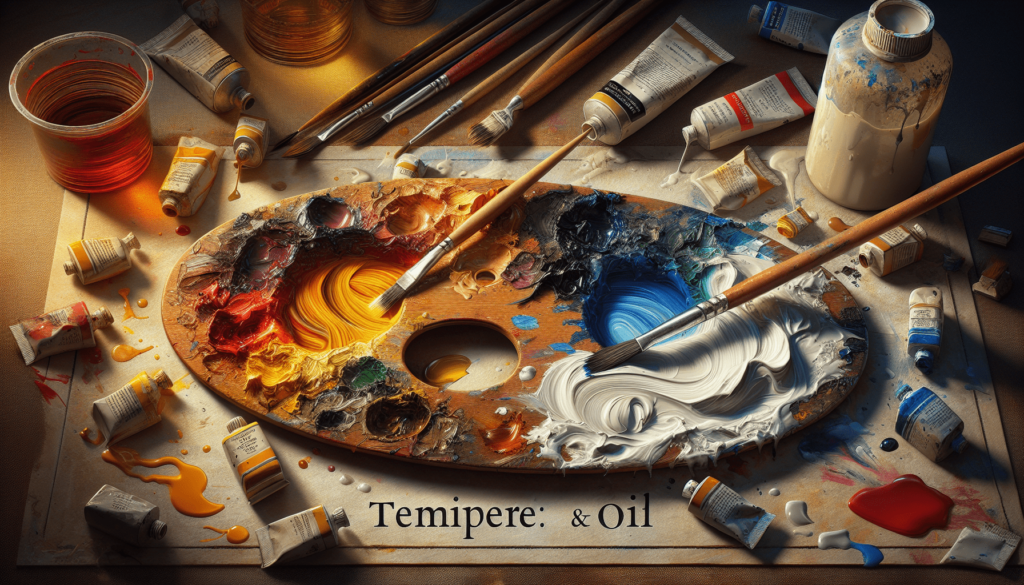
Advantages of Oil Painting
One of the key advantages of oil painting is its versatility. Oil paint can be used in thin washes or thick impasto layers, allowing artists to create a wide range of textures and effects. The slow drying time of oil paint also makes it easier to blend colors, create smooth transitions, and achieve a high level of realism in the artwork.
Another advantage of oil painting is its longevity. When properly prepared and cared for, oil paintings can last for centuries without fading or deteriorating. This makes oil painting an ideal medium for artists who want their artwork to be preserved for future generations.
Disadvantages of Oil Painting
Despite its many advantages, oil painting also has some disadvantages to consider. One major drawback of oil painting is the long drying time. Since oil paint dries slowly, it can take days or even weeks for a painting to fully dry, making it difficult to make quick changes or corrections.
Another disadvantage of oil painting is its toxicity. Oil paint contains harmful chemicals such as solvents and heavy metals, which can be hazardous to the artist’s health if not used properly. It is important for artists working with oil paint to use proper ventilation and safety precautions to protect themselves from potential health risks.
Comparing Tempera and Oil Painting
Now that we have explored the unique characteristics of both tempera and oil painting, let’s compare the two mediums side by side in a table:
| Tempera Painting | Oil Painting | |
|---|---|---|
| Drying Time | Quick drying time | Slow drying time |
| Surface | Rigid surface such as wood or paper | Flexible surface such as canvas or linen |
| Color Palette | Limited color palette | Wide range of colors |
| Detail | Precise and intricate details | Blendable and smooth transitions |
| Finish | Matte finish | Glossy finish |
| Toxicity | Non-toxic | Toxic if not used properly |
| Archival Quality | Exceptional longevity | Long-lasting with proper care |
As you can see, tempera painting and oil painting have distinct differences in terms of drying time, surface, color palette, detail, finish, toxicity, and archival quality. While tempera painting is known for its precision and luminosity, oil painting offers versatility and richness in color.
Tips for Creating Stunning Artwork with Tempera and Oil Paints
Whether you prefer the fast-drying precision of tempera painting or the blendable richness of oil painting, here are some tips to help you create stunning artwork with these two mediums:
-
Experiment with Different Techniques: Try using different brush strokes, layering techniques, and blending methods to create unique effects in your artwork. Mixing tempera and oil paints can also add interesting textures and dimension to your paintings.
-
Use Quality Materials: Invest in high-quality paints, brushes, and surfaces to ensure the longevity of your artwork. Choosing archival-grade materials will help your paintings stand the test of time and retain their vibrant colors for years to come.
-
Practice Patience: Whether you are working with tempera or oil paints, patience is key. Take your time to layer colors, blend transitions, and add details to your artwork. Remember that art is a process, and each layer contributes to the final masterpiece.
-
Protect Your Health: If you are working with oil paints, make sure to use proper ventilation, gloves, and safety precautions to protect yourself from harmful chemicals. Consider using non-toxic alternatives or water-based solvents if you are concerned about your health.
-
Study the Masters: Look to famous tempera and oil painters such as Botticelli, Sandro, Leonardo da Vinci, and Rembrandt for inspiration and guidance. Study their techniques, composition, and use of color to improve your own painting skills.
By following these tips and exploring the unique characteristics of tempera and oil painting, you can create stunning artwork that showcases your creativity and technical skill. Whether you prefer the precision of tempera or the richness of oil, both mediums offer endless possibilities for artistic expression and experimentation.
